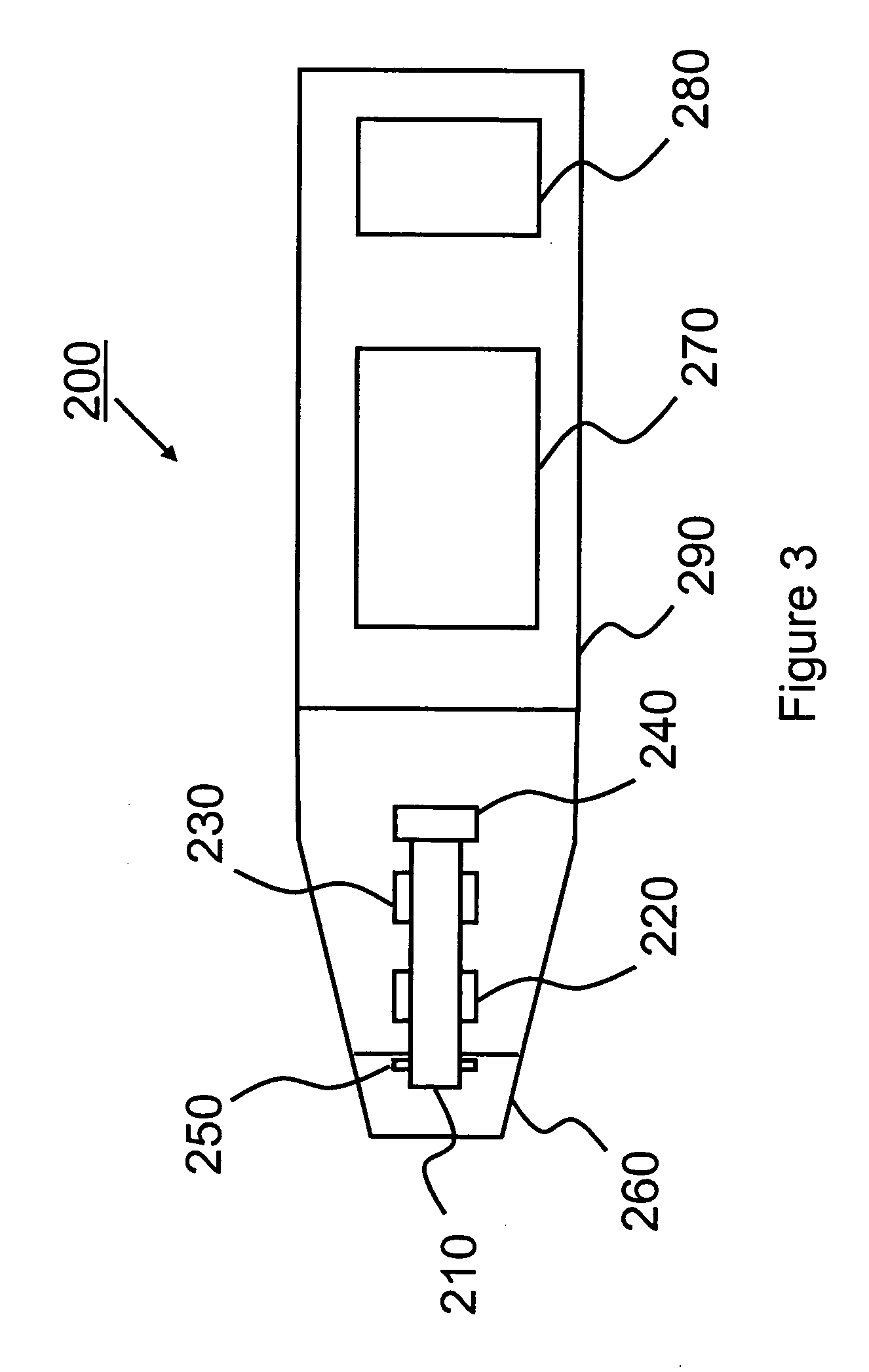Noninvasive tissue assessment
a tissue assessment and non-invasive technology, applied in the field of tissue assessment, can solve the problems of loss of mechanical strength, increased risk of fracture, degradation of the mechanical strength of the bones, etc., and achieve the effect of reducing measurement errors
- Summary
- Abstract
- Description
- Claims
- Application Information
AI Technical Summary
Benefits of technology
Problems solved by technology
Method used
Image
Examples
Embodiment Construction
[0027] As can be appreciated, osteopenia and osteoporosis, i.e., the loss of bone mass, arises to a large degree from the natural aging process, but also to a lesser degree from a decrease in muscle activity, such as due to bed rest. This loss can be detected using vibrational stimulation arising from a source external to the body, which creates mechanical, frequency specific, low level oscillations in the subjacent bones. Compared to imaging techniques such as DXA that neglect the volume of the measured bones, or ultrasonometer that measure localized speed of sound, acoustic vibrations around the natural frequency of an object excites the whole object, independent of size and shape. Changes in shape and bone mass content will alter its responsive frequency, and can thus be detected by the disclosed device and / or using the disclosed methods.
[0028] In more technical terms if one considers trabecular bone as a random network of struts, it is known from percolation theory that when a ...
PUM
| Property | Measurement | Unit |
|---|---|---|
| frequency | aaaaa | aaaaa |
| frequency | aaaaa | aaaaa |
| frequency | aaaaa | aaaaa |
Abstract
Description
Claims
Application Information
 Login to View More
Login to View More - R&D
- Intellectual Property
- Life Sciences
- Materials
- Tech Scout
- Unparalleled Data Quality
- Higher Quality Content
- 60% Fewer Hallucinations
Browse by: Latest US Patents, China's latest patents, Technical Efficacy Thesaurus, Application Domain, Technology Topic, Popular Technical Reports.
© 2025 PatSnap. All rights reserved.Legal|Privacy policy|Modern Slavery Act Transparency Statement|Sitemap|About US| Contact US: help@patsnap.com



